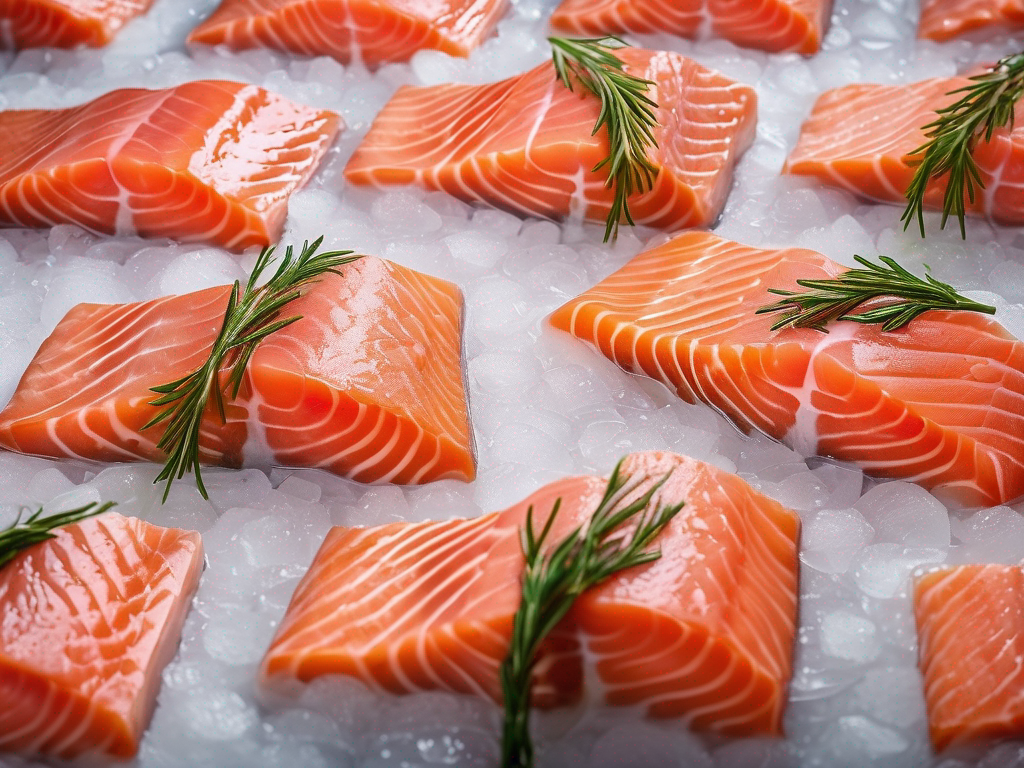
How to Tell if Fresh Atlantic Salmon Has Gone Bad
Get Your Free Food Safety Cheat Sheet
30 most common foods with instant answers. Print it and stick it on your fridge—completely free!
How to Tell if Fresh Atlantic Salmon Has Gone Bad
When it comes to enjoying seafood like fresh Atlantic salmon, ensuring its freshness is crucial for both taste and safety reasons. Knowing how to detect if your salmon has gone bad can help prevent foodborne illnesses and disappointment from spoiled fish. In this guide, we will explore the signs that indicate your fresh Atlantic salmon may have gone bad and provide you with practical tips to ensure you enjoy your seafood safely. (Fresh atlantic salmon)
Signs of Spoiled Fresh Atlantic Salmon
1. Smell
- A fresh piece of Atlantic salmon should have a mild, ocean-like smell.
- If your salmon smells sour, ammonia-like, or generally unpleasant, it may have gone bad.
2. Appearance
- Color: Fresh Atlantic salmon should have a vibrant pink or orange color, depending on the specific type.
- Texture: The flesh should be firm and moist. If it appears mushy or slimy, it is likely spoiled.
- Flesh: Any discoloration, such as a gray or brown tint, is a sign of spoilage.
3. Touch
- Fresh salmon should feel firm to the touch. If it feels mushy or overly soft, it may be spoiled.
4. Packaging
- If the packaging of the salmon shows signs of damage, such as tears, leaks, or bloating, the fish may have been exposed to air and contaminants, leading to spoilage.
Tips for Storing Fresh Atlantic Salmon
Proper storage is key to maintaining the freshness of your Atlantic salmon and extending its shelf life. Here are some essential tips for storing your fresh seafood safely:
- Temperature: Store fresh Atlantic salmon in the coldest part of your refrigerator, ideally at temperatures below 40°F (4°C).
- Packaging: Keep the salmon in its original packaging or wrap it tightly in plastic wrap to prevent exposure to air and odors.
- Use-by Date: Always check the use-by date on the packaging and consume the salmon before it expires.
- Freezing: If you are not planning to consume the salmon immediately, consider freezing it. Wrap it securely in plastic wrap and place it in an airtight container before freezing.
- Thawing: When ready to use frozen salmon, thaw it in the refrigerator overnight rather than at room temperature to prevent bacterial growth.
Food Safety Precautions
Ensuring the safety of your seafood is essential to prevent foodborne illnesses. Follow these food safety precautions when handling fresh Atlantic salmon:
1. Cooking Temperature
- Cook fresh salmon to an internal temperature of 145°F (63°C) to kill any harmful bacteria.
- Use a food thermometer to ensure the salmon is cooked thoroughly.
2. Cross-Contamination
- Keep raw salmon separate from other foods, especially ready-to-eat items, to avoid cross-contamination.
- Wash hands, utensils, and surfaces thoroughly after handling raw seafood.
3. Leftovers
- Refrigerate any leftover cooked salmon promptly and consume it within 2-3 days.
- Reheat leftovers to an internal temperature of 165°F (74°C) before consuming.
Conclusion
Knowing how to identify the signs of spoiled fresh Atlantic salmon and following proper storage and food safety practices are essential for enjoying your seafood safely. By using your senses to detect spoilage, storing your salmon correctly, and following food safety precautions, you can savor delicious and safe seafood dishes at home. Remember, when in doubt, it is always better to err on the side of caution and discard any questionable salmon to protect your health and well-being. Enjoy your fresh Atlantic salmon responsibly and deliciously! (Fresh atlantic salmon)
Authoritative Food Safety References
These agencies and university labs inform every tip and health precaution we publish.
USDA FoodKeeper – Cold Storage Guidelines
Official refrigerator, freezer, and pantry timelines maintained by the U.S. Department of Agriculture.
Visit USDA FoodKeeperFDA Produce Safety Rule & Grower Guidance
Field-to-fridge handling practices that prevent contamination of fruits, vegetables, and leafy greens.
Visit FDA Produce SafetyCDC Foodborne Illness Prevention Hub
Surveillance-backed guidance on pathogens, symptoms, and steps to reduce foodborne illness risk.
Visit CDC Food SafetyUC Davis Postharvest Technology Center
University research detailing optimal storage atmospheres for produce after harvest.
Visit UC Davis PostharvestPenn State Extension – Home Food Preservation & Safety
Peer-reviewed extension bulletins on safe canning, chilling, and reheating practices.
Visit Penn State ExtensionGet Your Free Food Safety Cheat Sheet
30 most common foods with instant answers. Print it and stick it on your fridge—completely free! Want more? Upgrade to the complete guide with 70+ foods.
Scan your food directly and get instant safety info using our AI-powered camera feature.